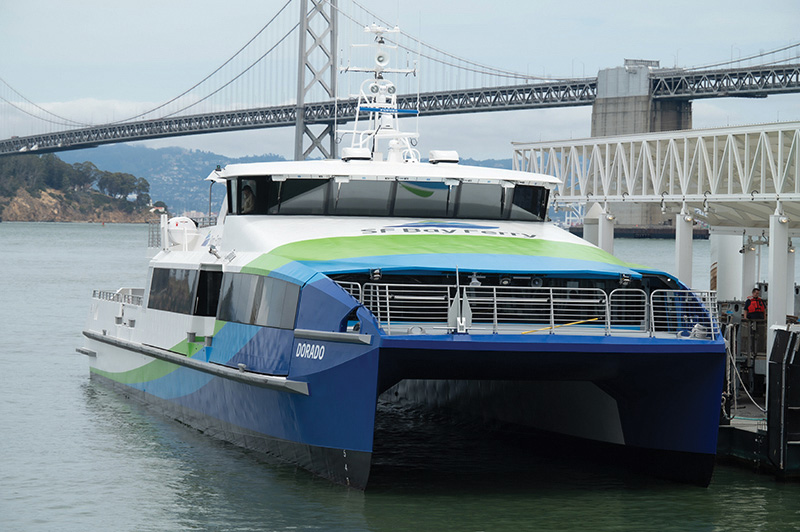
The San Francisco Bay Area Water Emergency Transportation Authority (WETA) has won a $14.9 million grant from the California State Transportation Agency (CalSTA) to develop a high-frequency network to serve some of San Francisco’s fastest growing neighborhoods with battery-electric ferries.
The grant, announced July 15, is to fund the construction of ferries and shoreside charging infrastructure to support the San Francisco Clean Ferry Network, which will use zero-emission ferries to connect waterfront San Francisco neighborhoods including Downtown, Treasure Island and Mission Bay, WETA said.
This grant, through CalSTA’s Transit and Intercity Rail Capital Program, is the latest in a series of awards secured to support the new service.
In 2020, WETA received $9 million from CalSTA to design and build its first zero-emission ferry along with shoreside infrastructure. In early 2022, WETA won a $3.4 million Federal Transit Administration grant to add an additional battery-electric vessel to the network.
This $14.9 million award funds construction of a third vessel for what will eventually be a four-vessel network. The grant also includes funds for the charging infrastructure needed to operate the service.
“San Francisco’s waterfront is home to some of the region’s fastest-growing new neighborhoods and this grant will help reduce traffic and improve air quality by connecting workers and residents with the country’s first high-speed, zero-emission ferry service,” WETA Board of Directors Chair Jim Wunderman said.
The Clean Ferry Network is expected to be a major milestone in WETA’s transition to zero-emission ferry service. The agency is currently completing a study investigating both clean marine propulsion technology and shoreside infrastructure needs that would inform future policy decisions.
Ferries aging out of San Francisco Bay Ferry service would be replaced with new zero-emission vessels. WETA also says that it could convert some current ferries to zero-emission propulsion systems over the next decade.
WETA has delivered eight new ferries with a combined 3,255 seats since 2017, with three more vessels under construction. Under WETA’s Pandemic Recovery Program, San Francisco Bay Ferry’s ridership in June 2022 reached 63% of pre-pandemic levels.
The transportation authority has said that more than three million passengers rode WETA’s San Francisco Bay Ferry service in 2019, the last pre-pandemic year.
In other WETA news, the agency and its partners in May celebrated the commissioning of the m/v Dorado, the newest high-speed passenger vessel to join the San Francisco Bay Ferry fleet.
The Dorado, which can carry 320 passengers, is the fastest vessel in WETA’s fleet with a service speed of 36 knots. It is also the first boat built for WETA that can safely dock at any of the system’s 12 ferry terminals, according to the Transportation Authority.
She was built by Mavrik Marine in La Conner, Wash. and was designed by One2Three Naval Architects of Australia. Construction management services for the project were provided by San Diego-based Aurora Marine Design.
WETA has said that it plans to rotate the Dorado among its routes to collect operational data and allow passengers across the ferry system to experience the boat.
Construction on the second vessel in the Dorado class, the m/v Delphinus, is currently underway. A total of four boats are planned for the vessel class.
“WETA is building a world class ferry system for the Bay Area and adding new vessels like m/v Dorado helps us get there,” WETA Board of Directors Chair Jim Wunderman said. “This American-made ferry enhances the capacity of our fleet and provides additional flexibility for our operations, helping ensure we run the system as efficiently as possible. It also happens to be a beautiful ferry.”

